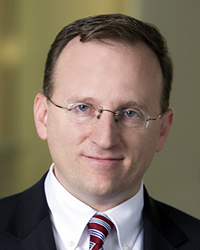In many European countries, Muslim immigration and integration have been at the center of policy, political and social debates – and they have been a factor in the elections of several nations. Key to understanding this issue is getting a fix on the size of Europe’s current Muslim population and how much, if at all, it will grow in the future.
A new Pew Research Center study tackles these questions. In this Q&A, Conrad Hackett, associate director of research and senior demographer at Pew Research Center, discusses how he and his team came up with the report’s population estimates and projections for Muslims in Europe.
What are some of the biggest challenges in trying to measure the size of the Muslim population in Europe?


Although there is great interest in Europe’s Muslim population, getting data is more difficult than you might imagine, largely because there is no official tally of this population. One reason is that some countries are averse to officially measuring religion. For instance, France hasn’t measured religion in a nationwide census since 1872. And even in some of the countries that do attempt to measure religion in their census, the figures can be problematic. For example, in the 2011 German census, which asked an optional question on religious identity, fewer than 2% of people identified as Muslim – an obvious undercount. And Muslims may be underrepresented in general population surveys for a host of reasons, such as language barriers.
Given these challenges, how were you and your team able to come up with accurate estimates for the number of Muslims in each country? How did you count Muslims in countries such as France, where, as you point out, there is no census question on religion?
We spent a lot of time evaluating the best available data sources in each country to come up with a 2010 baseline. Generally, we used sources that directly measure Muslim identity, such as the large Trajectories and Origins survey in France, which pays particular attention to properly sampling immigrants. Sometimes, as in Germany and Spain, we used data on people’s country of origin to indirectly estimate Muslim populations. In Spain, for example, we counted almost all Moroccan immigrants as Muslim since almost everyone in Morocco identifies as Muslim.
To estimate Muslim populations in mid-2016, we projected forward our 2010 baseline numbers using information about the age and sex of European Muslims in 2010, as well as their levels of childbearing and patterns of religious switching – that is, conversions into and out of Islam. We also included estimates of Muslims who have received refugee status since 2010, or who are expected to receive it. In addition, we counted Muslim migrants who came to the region since 2010 for reasons other than to seek asylum, such as for work or to attend school.
This report lays out three different scenarios of European Muslim population growth through 2050. How did you come up with them?
No one, including me, knows how many Muslims will live in Europe in 2050. The fact is, future political, cultural and economic events and policies will shape Europe’s Muslim population growth, and we simply don’t know how these circumstances will develop. Nevertheless, our report does provide some important clues about the future.
We start by creating a clear picture of the continent at the present moment. We provide the most comprehensive estimates available about the existing size of the region’s Muslim population (26 million Muslims total, or about 5% of the population of the 28 European Union countries, plus Norway and Switzerland, as of mid-2016). This, in turn, provides a baseline for future change.
Next, we describe the demographic characteristics of Europe’s Muslims that are likely to shape the group’s future growth. We find the median European Muslim is 13 years younger than the median non-Muslim and that Muslim women average one child more than non-Muslim women.
Finally, we use state-of-the-art demographic projection methods to model three “what if” scenarios. Our first scenario tries to answer the question: “What if there was no migration at all to or from European countries after mid-2016?” Under this scenario, we expect that by 2050, the Muslim share of Europe’s population would still increase to more than 7%. Our second scenario asks “What if regular migration to Europe continued but there were no more flows of people seeking asylum in Europe?” Under this scenario, we project the Muslim share of Europe’s population would more than double – to 11% in 2050. Our third and final scenario asks: “What if, in addition to regular migration, the high asylum seeker flows of the 2014 to mid-2016 period continued indefinitely?” In this case, we expect that Europe’s Muslim share would rise to 14% of the total population.
These three scenarios are thought experiments meant to illuminate different possibilities rather than provide ironclad predictions. For instance, we don’t actually think, per the first scenario, that there will be zero migration going forward. Likewise, we find it hard to believe, as described in our third scenario, that the historically high flows of asylum seekers we’ve seen in the last few years will continue indefinitely. But now that we’ve done the math on these “what if” scenarios, policymakers and the general public can use these projections to get a better sense of how restrictive or permissive migration policies might influence Muslim populations in Europe.
In recent years, there has been a flood of refugees into Europe, particularly from Syria and other Muslim-majority countries. In your population estimates – both for the present and the future – how do you track this fluid and often chaotic phenomenon?
Our refugee estimates began with data on first-time asylum applications collected by Eurostat, Europe’s statistical agency. In some cases, first-time applications are filed in more than one country, such as the Syrian asylum seekers who applied in both Hungary and Germany. So we adjusted our estimates for withdrawn applications to avoid double counting.
We then tallied those asylum seekers who have received or who we expect to receive legal status to remain in Europe. Regarding the latter, our analysis depended on where the asylum seekers were coming from. That’s because the primary criterion for decisions regarding who will get to stay is the safety of the origin country. Particularly dangerous countries, such as Syria, have much higher acceptance rates than others, while asylum seekers from less dangerous countries, such as Albania, are less likely to have their applications approved.
Finally, we decided not to count the roughly 1 million Muslim asylum seekers who are in legal limbo because they are not expected to receive refugee status. In doing this, we may be erring on the side of being too conservative in our overall estimates, because if significant numbers of those in legal limbo remain in Europe, their presence will have ripple effects increasing the future size of the continent’s Muslim population.
In another way, however, our estimates may err on the side of not being conservative enough, because we assume all asylum seekers granted refugee status will continue to remain in Europe indefinitely. While refugees who have settled far from their country of origin typically do stay in their new host country, it is possible conditions could improve enough in Syria and other countries that some refugees will return. In addition, some people receive only temporary refugee status and if this status is not renewed, their opportunity to legally stay in Europe will expire. Either case could reduce future European Muslim counts.
